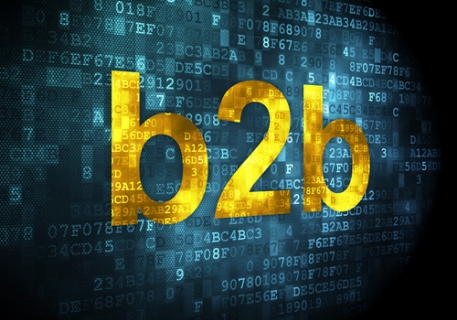The Quest For The $4 Trillion B2B Holy Grail

U.S. small businesses today spend a combined $4 trillion on expenses necessary to keep their companies operating, most of which is spent via checks. And that doesn’t include payroll costs. During a recent Sanford C. Bernstein Strategic Decision Conference, American Express President Ed Gilligan described the opportunities and challenges companies like Amex faces as they look to replace the paper with cards that earn rewards companies can invest back into the businesses.
Not including payroll expenses, U.S. small businesses today spend nearly $4 trillion operating their companies, yet only about 9 percent of that spending today is on charge or credit cards. Card companies see this as a huge B2B opportunity, yet they face challenges both from the small businesses doing the spending, and from the companies with which they do business, American Express Co. execs noted last week during the Sanford C. Bernstein Strategic
Decision Conference.
In its efforts to tap into that potential growth opportunity, Amex over the past few years has taken its consumer-business model and applied many of the same strategies in the B2B markets. It is enabling businesses, for example, to take advantage of the rewards they earn for card use by applying them toward advertising and other business-oriented expenses, Ed Gilligan, Amex president, noted on the conference call.
“We’ve changed our business model over the years; it’s a little bit like consumer, but it’s clearly a B2B business,” he said. “We have a business unit dedicated to helping small businesses grow to provide them with tools to help manage their expenses, run their company, earn rewards, (and) put those rewards to work.”
Indeed, rewards play a key role in the B2B payments strategy. Companies can use their Amex cards to buy Google advertising, raw materials and office supplies, and as they do so they earn rewards on that spending that they can use to reinvest in their business, Gilligan said. “We’ve created this virtuous cycle for small businesses and believe we have a very good runway here,” he said. “Yet we only feel in many ways we’re scratching the surface of what this business could do over the next 5 to 10 years, so (there’s a) great runway for growth there.”
Amex’s Intuit partnership
The vast majority of the 90 percent of small-business spend continues to rely on checks and, to a lesser extent, cash and personal cards. Amex is looking to develop products to capture more of that B2B share, and the company’s recently announced partnership deal with Intuit will play a pivotal role, Gilligan said.
In April, Amex’s Open small-business division announced the launch of ReceiptMatch with QuickBooks, a global cloud-based accounting-software solution for small businesses and accountants. Through the initiative, companies can synch their online accounts with QuickBooks. When they take a picture of a receipt from a mobile device, it shows up on their Amex bill and automatically is uploaded into their accounting software with Intuit.
With Intuit, Amex gains visibility into companies’ expenditures because they are using software for all of their general ledger work and accounting, Gilligan said. “So we believe Intuit will be an example of a new partnership and new product development that will help us crack into this big opportunity for spending.”
Barriers remain
But there are barriers to moving some of the non-card B2B expenses to cards, Gilligan noted. One of the chief obstacles is the mindset many companies have in changing how they pay their business expenses.
Amex employs a dedicated group of client managers that talk to small businesses to educate them that they can use cards instead of checks, and receive benefits from doing so.
“Small businesses are not thinking that way, but when we talk to them and explain what our products can do and how they can earn more reward points and how they can use those points to invest back in their business, it works,” Gilligan said. “We see dramatic expansion of spending on the Amex card when we apply these treatments to these accounts.”
Acceptance issues
However, many of the companies businesses buy from don’t accept plastic or don’t accept it for business reasons. And that’s where Amex puts its closed-loop model to work that includes many vendors that offer products and services companies commonly buy, Gilligan said.
“We have a dedicated merchant group that we can target these B2B merchants to sign them up for this group of customers,” Gilligan said. “We do that in our corporate card business with large and midsized companies. We’re now doing that with small businesses where we can work across American Express to target merchants we want assigned, and we can talk to those merchants about how we can bring them plus-business, introduce them to whole new customer sets who were not using those merchants today.”
Not so fast
However, it’s not an overnight success story, Gilligan conceded. “We’ve been doing this since the 1980s, but lately we’ve really perfected the business model, and I think we’re making real progress,” he said.
“When I look at where growth is going to come in the next five or 10 years, small businesses loom large for American Express,” he said.
